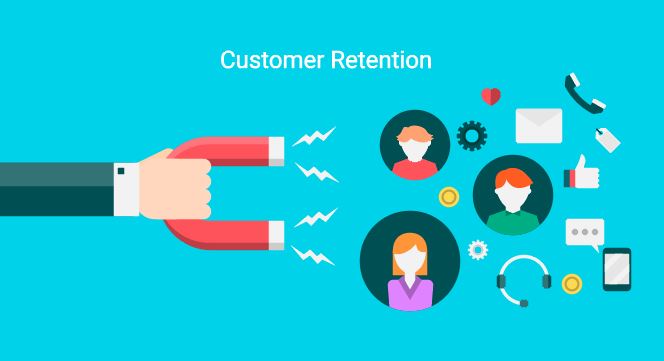Remember the time you lost something, and asked for help looking for it and heard the response, “Well, look in the place you last remember seeing it.” or something along those lines.
While that remarkably unhelpful (albeit, well-meaning) reply might meet your expectations, the same cavalier response won’t fly when it comes to customer service.
Simply put, customers expect more out of you when they need help.
What Customers Expect Out of the Service Experience
Your business makes a promise to your customers, but it’s not enough to deliver on that promise. To provide the best experience possible, you have to understand your customers’ expectations.
Luckily, meeting those expectations don’t have to be at a cost for your business. In fact, people are willing to pay more for a better experience.
How much more?
Companies that deliver top-notch experiences reap big revenue growths. Precisely 4-8% more1 than competitors in their market.
So it’s definitely worth it, but figuring out what those expectations are and how to meet them is another challenge unto itself.
While every customer base will be different and every business will have their own unique path to delivering the experience, there are some universal faux-pas that no customer service department should commit.
5 Things that Ruin the Service Experience When Customers Need Help
To help you capitalize on revenue growth and improve your customer experience, we’ve compiled a short list of things that your customers don’t want to run into when they’re trying to get help from your service team.
1. Repeating Themselves to Every Agent
If a customer can’t take care of their problem with a single agent and has to work across the team, they don’t want to repeat themselves. Every minute that they have to spend explaining their problem again, is another minute that their problem isn’t being fixed.
Similarly, they don’t want to be told to try solutions they’ve already found on their own.
If it didn’t work for them when they were reading the help documentation, it probably won’t work when the service agent is parroting the same instructions, either.
Luckily, if your helpdesk has journey mapping, you can mitigate this challenge by keeping your agents — and customer — on the same page with a unified system.
2. Playing the Waiting Game
Customer expectations are rising, and if you’re not resolving tickets fast enough, you may not be meeting those heightened expectations. 67% of customers2 expect your service to be faster in 2018.
Instant is best, but it’s not always viable over more asynchronous channels like social media and email.
In the case of email, 44% of your customers3 expect a response to their query within a few hours at the most.
Fortunately, that still leaves over half of them with the far more realistic expectation of a response within a business day or two, but it still puts the clock against your agents.
A clock which doesn’t let up with your synchronous channels like live chat and phone lines.
In fact, both present the same logistical hurdle for your business. If you don’t have the funds to staff up according to the demand, you’ll need to designate specific hours of service so customers know when they can reach instant help.
Which means they’ll still be playing the waiting game — it’s just one where they’ll know the parameters of the board.
Alternatively, you can avoid this faux pas altogether by getting a little more technologically advanced and using AI-powered support agents for your live chat. Chatbots don’t need rest, don’t collect a salary, and can be programmed to address the most common issues.
They can also help users find information in your knowledge base and get to their solution faster.
Don’t make your customers play the waiting game. The faster they can take care of their issues, the closer you are to meeting their expectations.
3. Going on an Archeological Dig for Your Support Team
If your helpdesk is buried in the wilds of your website, customers aren’t going to be happy about having to dig through it to find it.
They’ll be even less thrilled about having to work through automated channels before they can get to a real person.
That’s why websites like GetHuman exist, and rank well on the search engine results page.
Ranking in the top ten — behind only Target itself — sends a clear message that searchers want human-to-human communication as quickly as they can get it.
In fact, 73% of your customers4 would rather get help from a live person than anything else.
So while you should offer automated support, you should also make it simple for them to connect to your agents by putting your contact information front and center on your website.
It’s even better if it’s in multiple locations, such as in your top navigation and footer menu.
Testing the visibility of your support information is pretty easy.
Just squint your eyes. If you can’t identify where your support information is within a few seconds of squinting, it’s not visible enough.
And believe it or not, this is a bonafide design test5 that user experience experts use to ensure visual elements are clear and organized in the correct hierarchy.
So don’t make your users strap on a pith helmet to find your service department, and if you’re unsure if your contact information is clear, run the squint test.
It’s a small step, but for someone who needs help, it’s a big impact.
4. Training Your Customer Service Staff Themselves
Eventually, everyone has to exit the training seminar and start taking live calls. But if you’re not preparing your agents ahead of time with the resources and confidence they need, you put the onus to train your staff on the experience.
And for a customer with a problem to solve, that’s an additional frustration. While the may be willing to help a fledgling agent out when they have a sales call, their patience will be decidedly more strained if they need support.
It’s also more likely to burn out your staff and lead to a higher turnover rate in an already tumultuous industry. If you want to retain your staff longer, you need to put the extra time and expense into training them thoroughly.
Remember, customers are willing to pay more for a better experience, but they can’t get that experience if your newest agents are being thrust into the highest-escalation cases before they’re ready.
But like all of the previous faux pas, this is another thing that’s surprisingly easy to solve and avoid. Even just adding two extra days of orientation can put your staffers in a better position to provide service and enmesh them in the company culture.
And if they feel supported, they’ll be able to transfer that support to the people who matter most — your customers.
So give your newest agents time to stretch their legs and get into the groove of customer service.
Start by adding additional training time, then regularly check-in with your staffers to make sure they have everything they need before they work with high-stakes customers on a deadline.
5. Not Getting an Apology
Your agents first course of action when a customer populates a ticket is to solve the problem and resolve the ticket as quickly as possible.
But while expediency and a solutions-first focus is a definite boon for great customer experience, neglecting the small things can have surprisingly large impacts.
Like forgetting to add a sincere but brief apology for their experience.
Just make sure your apology is straightforward like Adweek’s and doesn’t take more time than it needs to or come with any caveats. If your customer service agents add an interjection, “We’re sorry about your experience, but…” it’s less likely to be warmly received.
Psychologist Harriet Lerner says7 that any apology that includes a rationalization negates the sincerity of the sentiment.
Your agents shouldn’t try to explain what went wrong or provide an excuse, even inadvertently. They should just apologize and move on to addressing the problem.
It’s what you’d want someone to do for you, isn’t it?
Ultimately, customer expectations are always going to keep growing, and meeting them is critical to keeping your business in best possible form, delivering the best experience to customers. Following the steps mentioned above, is definitely a sure-fire way to do just that.










